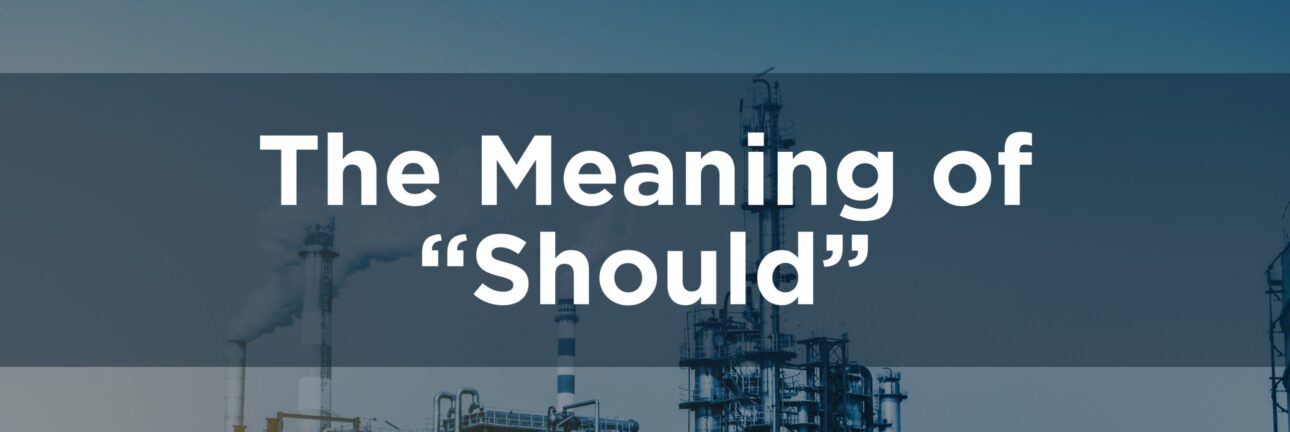The Meaning of “Should” in Process Safety Management: A New Publication in Process Safety Progress

We are pleased to announce the publication of a new article titled The Meaning of “Should”, co-authored by Michael J. Hazzan, Nicholas White, and Jarrod White, in the Process Safety Progress journal. This article explores an important but often overlooked aspect of Process Safety Management (PSM)—the distinction between “should” and “shall” as applied in the OSHA PSM Standard, the EPA RMP Rule and other industry standards.
The Issue at Hand: “Should” vs. “Shall”
The challenge and significant effort of interpreting the language of safety standards can impact how facilities implement and comply with requirements. Ambiguity often arises from the use of the word “should” in regulatory documentation and guidelines. While “shall” is typically used to indicate a mandatory requirement, “should” often leaves room for interpretation. This suggests that while something is acceptable and preferred, it may not be required.
When it comes to PSM, the situation becomes even more complex. The term “should” appears in a variety of provisions within the OSHA 1910.119 standard. This is of importance especially in relation to recognized and generally accepted good engineering practices (RAGAGEP). While these guidelines are not always legally binding, they are widely accepted as best practices. The question then becomes: how does one navigate what is suggested versus what is required?
Why This Matters
This distinction has real-world implications for the safety and efficiency of facilities. Determining how to handle provisions marked with “should” requires careful judgment to ensure that safety is not compromised. Some facilities may adopt a more conservative approach, treating “should” provisions as though they were mandatory, while others may opt for a more flexible interpretation, potentially overlooking important safety measures.
Specific Examples
The article provides insights into how companies can approach these provisions and what to consider when interpreting them. By examining the lessons learned from AcuTech’s extensive onsite observations and specific examples of important “should” provisions, the authors provide real-world examples of the impact these interpretations have on process safety programs. The paper gives special consideration to international use of this language.
Final Thoughts on “Should” in Process Safety Management
The Meaning of “Should” offers valuable insights into one of the subtler but critical aspects of PSM. This article serves as an important resource for professionals seeking to better understand how to apply the PSM standard in real situations and ensure the highest levels of safety in their operations.
While “should” may offer some flexibility, it does not mean that safety can be compromised. Facility operators must take a proactive approach to ensure that any recommendations made by industry standards or RAGAGEP are considered thoroughly and applied appropriately to safeguard people, processes, and the environment.
Access the Full Article
For those with a subscription to Process Safety Progress, the full article is available for reading. We encourage professionals in process safety to read the article. Consider how it can inform their safety practices and compliance strategies.
Process Safety Progress
Process Safety Progress is a journal of the American Institute of Chemical Engineers (AIChE) which covers process safety for engineering professionals. Their focus is on chemical and hydrocarbon process safety, loss prevention and health, and the journal looks at emerging concerns like plant and/or process security.
